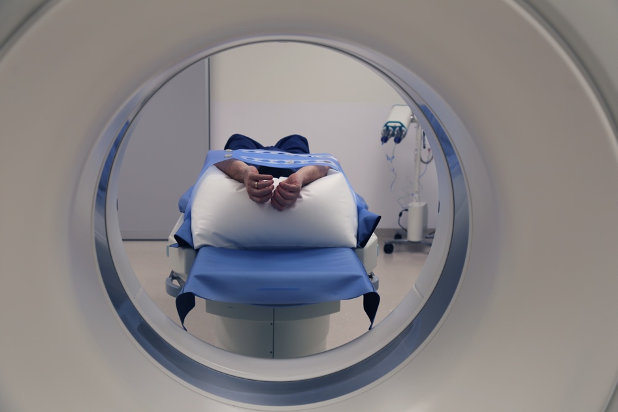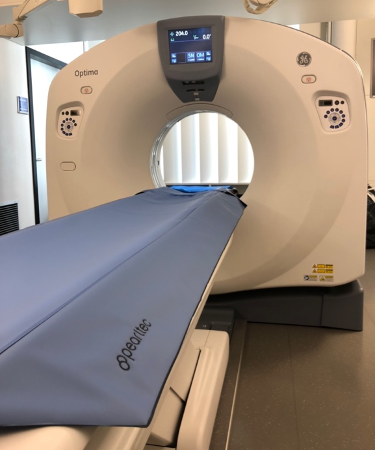The patient experience in the radiology setting is an integral yet often underestimated aspect of healthcare provision. None of us enjoy feeling like we’re being passed through an assembling line in a heartless multi-billion valued corporation. Unfortunately, too many healthcare facilities and professionals neglect the individual and their unique emotional needs, leaving them to feel this very way. Patient-centred healthcare looks at each patient as an individual and emphasizes patient engagement and communication. No one likes to imagine their lovely mother or grandmother being rushed through an outdated and badly maintained radiology department for their MRI or contrasted CT scan without some proper communication and empathy towards their fears and anxieties. So why do that with other people’s families?
This article explores the multifaceted importance of patient experience (the sum of all interactions during the patient journey within a department, being them with the facilities or the staff) in radiology, highlighting patient positioning, emotional well-being, diagnosis, and overall quality of care. Drawing upon existing literature, personal experience, and real-world insights, this article underscores the need for a patient-centred approach in overall radiology practice.
The Underrated Aspect: Emotional Well-being in Radiology
Radiology is an indispensable component of modern medicine, providing invaluable diagnostic insights that aid and most often than not dictate therapeutic outcomes. However, the significance of the actual patient experience in radiology, including aspects like proper patient positioning, patient-staff communication, empathy and compassion for patient suffering, fear and anxieties, should not be overlooked. A patient's encounter with radiology services encompasses various elements, including emotional well-being and the ultimate diagnostic outcome. There is a plenitude of factors that will influence the patient experience with different levels of impact, from the way the staff interacts with the patient, to the colour of the walls on the X-ray room for example. Some will directly influence healthcare outcomes and some will solemnly affect the patient perception of the service provided. All are important when focused on a patient-centred approach. This article delves into these crucial aspects, emphasizing their interconnectedness and importance.

It's More Than Just Medicine: Patient Perception and Clinical Space
To start with, let’s discuss the factors that do not directly influence the treatment and diagnosis outcome, or in other words, do not affect healthcare outcomes per se, but the patient’s perception of the service being provided to them.
Beyond the advanced technology and skilled professionals, the setup and decoration of a clinical space can significantly impact the patient experience. A welcoming, clean, and safe environment not only contributes to patient satisfaction but also shapes their perception of the quality of care they receive.
Imagine walking into a radiology department that exudes warmth and comfort, with soothing colours, well-designed waiting and clinical areas, and friendly staff. Such an environment immediately puts patients at ease, reducing anxiety and apprehension associated with medical procedures. The physical setting of a radiology department can influence a patient's emotional state, making them feel valued, cared for and less anxious with the outcome of their examinations, allowing them to be more focused and less self-centred which will undoubtedly help the staff looking after them provide a better imaging experience.
A well-thought-out setup might include comfortable seating, ample natural light, and artwork or decorations that inspire a sense of tranquillity. These elements help divert patients' attention from their worries and create a positive atmosphere for healing. Patient satisfaction is a crucial metric in evaluating healthcare services, and the design and ambiance of the radiology department are integral to achieving high levels of satisfaction. When patients are satisfied with their radiology department experience, it can lead to improved compliance during their examinations and with follow-up appointments and treatment plans. Happy patients are also more likely to recommend the facility to others, contributing to its reputation and success.
The perception of the quality of care received at a radiology department is closely tied to its physical appearance and the attention to detail in its decoration. Patients often equate a well-maintained and aesthetically pleasing environment with professionalism, competence, and a commitment to their well-being.
Safety and Hygiene: The Invisible Pillars of Patient Experience
A clean and organised radiology facility with modern equipment suggests a dedication to staying at the forefront of medical advancements. This perception can reassure patients that they are receiving the best possible care. On the contrary, a neglected or outdated environment may lead patients to doubt the quality of the services offered and increase their levels of anxiety.
In today's healthcare landscape, safety and infection control have become paramount concerns. A well-planned radiology department setup takes into account the need for rigorous infection control measures. Adequate spacing, well-marked hygiene stations, clear signage for social distancing, as well as proper, well-maintained, durable, easy to disinfect padding, all contribute to patient safety which is also crucial for a great patient experience as no one likes to lay their faces on a cracked cushion/equipment or dirty pillow while having their radiological examinations.
Furthermore, a clean and well-maintained facility reduces the risk of healthcare-associated infections, which is essential in ensuring patients' well-being. Patients should feel confident that their radiology department is a place where their health is protected and celebrated, not compromised.

The setup and decoration of a radiology department are not mere aesthetic choices; they have a profound impact on patient experience and satisfaction. A welcoming, clean, and safe environment can alleviate patient anxiety, enhance their perception of the quality of care, and ultimately contribute to better health outcomes.
Going Beyond Aesthetics: Factors Influencing Diagnosis and Treatment
The other aspects of patient care that do not relate to the ornamental side of things, are the ones that directly influence diagnosis and treatment outcomes. In this category, the main focus should be placed on communication, patient positioning, empathy and understanding, and the ethical duty of candour.
Effective communication between radiologic technologists/radiographers and patients and/or their families is essential. Explaining the procedures, addressing concerns, engaging with their emotions, feelings, fears and anxieties, and providing clear instructions contribute to a positive patient experience. Patients who feel well-informed and involved in their own care are more likely to comply with positioning requirements as well as exam preparations and instructions (i.e. breath holds). We all like to be listened too, and having a healthcare professional showing that they CARE and are inclined to build some rapport with us, is half-way through to a great medical experience.
The emotional state of a patient in the radiology setting can significantly impact the overall experience and even the diagnostic outcome. Anxiety, fear, and discomfort are common emotions in this environment, often linked to the fear of diagnosis or claustrophobia in the case of MRI scans.
Accurate patient positioning is a fundamental requirement for obtaining high-quality radiological images. Proper positioning ensures that the targeted anatomy is appropriately visualised, minimising the need for repeat scans and associated radiation exposure. However, achieving optimal positioning can be challenging, particularly for patients with physical limitations or anxiety. Patient comfort and cooperation play pivotal roles in this process. This is intimately connected with the communication aspect of the patient experience as the better a member of staff communicates to the patient and/or their families the better the positioning will be and the better the patient will feel. Proper positioning with proper adjuncts/padding and proper explanation/demonstration, not only reduces anxiety and discomfort as it also helps achieving better diagnosis as patients who are at ease are more comfortable and compliant to stay still and follow instructions during the scan, resulting in clearer images.
Emotional Support: The Subtle Art of Healthcare Empathy
Patient-centred care radiology departments can implement patient-centred care approaches to address emotional needs. Creating a calming and empathic environment, offering pre-procedure relaxation techniques, and providing emotional support or chaperones can mitigate anxiety and improve the overall experience. Patients who feel emotionally cared for and sense empathy from their healthcare professionals are more likely to cooperate during imaging, reducing the likelihood of image artefacts due to motion.
Going back to the grandmother type of care, being able to put ourselves in the patients’ shoes is a key element of healthcare empathy. It is easy to lose focus during long hours of work with shortages of staff and outdated equipment, but the constant capability of sympathising with our patients’ feelings and anxieties should be a must for any healthcare professional. After all, we all do the amazing things we do because we deeply care for the well-being of others.

Ethical Considerations: Where Medical Efficacy Meets Moral Responsibility
Ensuring a positive patient experience in radiology is not only a matter of medical efficacy but also an ethical practice. It aligns with the principles of patient autonomy, beneficence, candour, and non-maleficence. Radiology professionals have a responsibility to prioritise patient comfort and emotional well-being, including pain free positioning, as part of their duty of care.
Respecting patients’ specific debilities, beliefs, ideals, languages, motor or sensory restrictions, preferences, lifestyles, identity, and care choices is paramount for an optimal patient experience, and should be one of the main points of focus for any healthcare professional working within an ethical radiology service.
The Sum of Its Parts for a Holistic Experience
In conclusion, the patient experience in the radiology setting encompasses various critical aspects, ranging from room decorations, patient-staff communication, patient positioning, and ethical care. By recognising the interconnectedness of these elements and adopting a patient-centred approach, radiology departments can enhance patient diagnostic outcomes, reduce radiation exposures, and improve overall quality of care. Investing in a global and excellent patient experience not only benefits patients but also contributes to the enhancement of ethical and professional standards of radiology practices.
Radiology departments and healthcare facilities in general should recognise the value of investing in the physical space where medical procedures are conducted. By prioritising patient comfort, satisfaction, and safety through thoughtful design and decoration.
Radiology departments can become beacons of compassionate and quality healthcare, leaving patients with a lasting positive impression of their journey toward healing.
Samuel Oliveira 19.09.2023
Samuel Oliveira is a passionate radiology professional, MRI safety officer, opinion leader, and innovator. As the founder and CEO of Everything MRI, as well as the founder of the London MRI Leads Group, he is committed to changing and improving the MRI world step by step.

